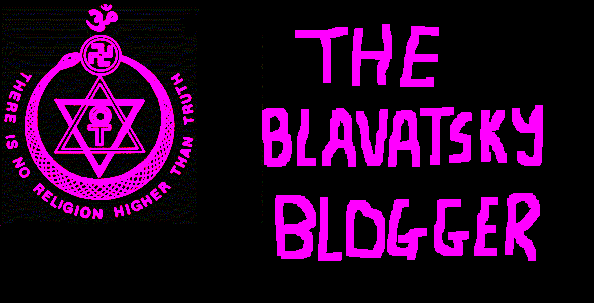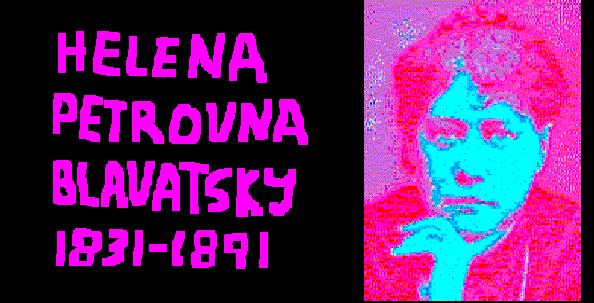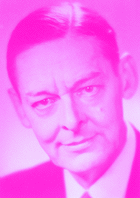Blavatsky Blogger

Taking Theosophical
ideas
into the 21st
century

T S Eliot Chronology
1888-1922

1888 On 26
September in St. Louis, Missouri, at 2635 Locust Street, Thomas Stearns Eliot
sees first light. In his mother's bedroom a painting of the
Madonna
and child, and an engraving of
Theodosius
and St Ambrose, illustrating the triumph of holy over temporal power. During
the summers the family stays at Hawthorne Inn,
1894
Discusses the existence of God with his Irish nurse, Annie Dunne.
1895
Attends local school for two years, run by Mrs Lockwood.
1896 His
father builds a summer house at Eastern Point.
1898
Attends
Misérables,
Molière's Le Misanthrope, La Fontaine's Fables as well as physics and
chemistry. Has to go to the dentist twice a week for two years
where he
reads the collected works of Edgar Allen Poe. Specifically recalls reading The
Assignation, the opening quote of which leads him to
read
poetry and plays a significant part in his desire to become a poet.
1899 Is
diagnosed to have a congenital double hernia. Gets sailing lessons. Brings out
eight (Akroyd) or fourteen (Gordon) issues of own
magazine,
The Fireside. Among the various writings the little magazine's contained,
notable is the appearance of a Dr Sweany.
1905 Eliot
joins the
1906 Eliot
joins
lower rate
than most Freshmen.' Has low grades as before.
1907 Rooms
at 22 Russell Hall,
Russell at
tea in art collector Ms Jack Gardner's mansion (but they must already have met
in class). (?) George Herbert Palmer introduces Eliot to
pre-Socratic
philosophy and Heraclitus
1908 (?) Is instructed to read Dante in Italian.
Takes composition classes from Copeland 1908/9 term. (?) Reads William James'
Pragmatism.
'Circe'
published in November. Comes across Arthur Symons' The Symbolist Movement in
Literature in December, which leads him to order Laforgue's Oeuvres Complès
from
1909 Sees
'Tristan'. Attains AB (BA) degree. Proceeds for MA in English Literature, under
supervision of Irving Babbitt and George Santayana. Reads Santayana's Three
Philosophical Poets (one of them Dante), has a course in the history of
allegory with him. Irving Babbitt introduces Eliot to Theosophy, Buddhism,
Hinduism and Sanskrit and teaches him French literary criticism.
Joins
board of Harvard Advocate. Takes own rooms at
'Conversation
Galante' in November. Visits a writer's club called 'The Signet' Reads early
Yeats and Henry James, and is introduced to Pound's
Exultations
and Personae through W.G. Tinckom-Fernandez (a fellow editor of the Advocate).
1910
"Humoresque" published in the Harvard Advocate, January issue. Writes
'Spleen', 'Convictions' and 'The First Debate between the Body and Soul' in
January. Begins his notebook called "Inventions of the March Hare,"
containing
his poetry from 1909. Writes 'Easter: Sensations of April' (?)
Writes
'I'. Has scarlet fever in May, preventing him from taking his spring finals,
but nevertheless graduates on 24 June. Presumably writes
the
'Goldfish' poems during summer. Writes 'Silence' in June. 'Mandarins' in
August. Writes first passages from J. Alfred Prufrock. In October,
Eliot
sails to Europe, Paris, and stays at 9 rue de l'Université (Akroyd) or 151 bis
rue Saint Jacques (Gordon), where he will meet Jacques Verdenal
to whom he
dedicated the first edition of Prufrock and other Observations.
Studies
French with Alain-Fournier Rivière with whom he reads French translations of Crime
and Punishment, The Brothers Karamazov and The
Idiot.
Introduces in return Conrad's Typhoon, so Eliot
must have read that. Studies French literature at Sorbonne. Later points
to Charles Louis Philippe's Bubu de Montparnasse as a 'symbol' for the the
quarter of
1911 Attends
seven weekly lectures by Henri Bergon at the Collège de France, presumably
reads his Creative Evolution, and comes across Maurras.
Writes
'2nd Debate between the Body and Soul', 'He said: the universe is very clever
...', 'Rhapsody on a Windy Night'. Travels to
completes
"J. Alfred Prufrock" and somewhere in this year also "Portrait
of a Lady." Travels to
della Ca
d'Oro in Venice, holding Mantegna's St Sebastian. Returns to
Bartholomew
the Great, West Smithfield, St Sepulchre Old Bailey, St Etheldreda at Ely
Place, Holborn, and St Magnus the Martyr. The third
'Prelude'
in July. Subscribes to Nouvelle Revue Française and pins reproduction of
Gauguin's 'Yellow Christ' on his wall. Studies Sanskrit
and the
Pantanjali's metaphytics under James Woods, Indic philology under Charles
Lanman, and Indian philosophy. Presumably writes the first draft of 'The Little
Passion'. Starts carrying a pocket version of Dante's Comedy in Italian, from
which he starts memorizing passages and in which
he marks
most of the passages that are to reappear in his own poetry.
1912 (?)
Reads Hegel's Philosophy of History. Charles Lanman gives him a copy of
Upanishads, the Twenty-Eight by Vasudev Laxman Shastri Phansikar (
1913 Takes
part in a 'Stunt Show' at
he buys
Paul Deussen's Die Sutras des Vedanta. Writes and reads report on primitive
religions for Royce's class on 9 December, in which he
criticizes
Frazer, Jane Harrison, Durkheim and Levy-Bruhl for neglecting 'human need'. Wonders
what is the meaning of the 'mechanical behaviour'
described
by the anthropologists on 16 December.
In this or
the following year he gets his own typewriter. Writes an essay on Bergson
probably this or next year. Presumably writes 'Oh little voices ...' Enrolls
for dancing and skating lessons this and the next year. Attends concerts of
Ravel, Dvorak, Wagner, Sibelius, and Chopin, violin recitals of Mischa Elman
and Fritz Kreisler at Symphony Hall, Puccine operas, and again Tristan at the
Guyon,
Walter Hilton, St John of the Cross (Dark Night of the Soul), Jacob Böhme, St
Ignatius Loyola (Spiritual Exercises) and St Bernard, taking notes from among
others Evelyn Underhill's Mysticism (1911). (.. from which he copies a fragment
that ends 'Visionary experience ... is a
picture
which the mind constructs ... from raw materials already at its disposal.'.
From these studies he probably learns the word aboulie which
he uses in
1921 to describe his sickness. He also reads The Story of My Heart (1891) by
Richard Jeffries, and
source
unidentified by Gordon).
1914
Criticizes all theories of knowledge for their inability to "treat
illusion as real" in Royce's class on 24 February. Writes 'After the
turning ...', 'I am the Resurrection ...', 'So through the evening ...',
and 'The
Burnt Dancer' in June. Revises 'The Love Song of Saint Sebastian' in
which Hans
Memling's St Sebastian, and then to
others the
Moral
Ideas. Calls on Ezra Pound on 22 September at
good as
anything I've ever seen". Pound introduces Eliot to Wyndham Lewis, Hilda
Doolittle, John Gould Fletcher, Harriet Shaw Weaver, Hilda Doolittle and
Richard Aldington. Presumably points Eliot to T. E. Hulme, among others his
'Conversion'. Joins the Bodley Club and the Nineties Society.
Is elected
president of Harvard's Philosophical Society. Meets E.R. Dodds at a lecture.
Becomes close friends with Karl Culpin, an undergraduate
historian.
Goes for brief vacation with Barnd Blanshard and Culpin to Swanage, Dorset.
Culpin soon after joins the army and is killed on his
first day
in the trenches. Joins 'the Coterie' at the invitation of E.R. Dodds. Goes to
Writes
'The Death of Saint Narcissus' late this year or beginning of next.
1915 Sends
'Suppressed Complex' to Pound on 2 February.
Goes back to
for his
Harvard fellowship for a second year. Prufrock is published in Poetry (Harriet
Monroe, Chicago) in June. Marries Vivenne Haigh-Wood on June 26. Preludes and
Rhapsody on a Windy Night is published in Blast in July by Wyndham Lewis, who
however refuses to print extracts from the Bolo saga, 'Bullshit' and 'The
Ballad of Big Louise'. Eliot goes back to
night
gatherings in Soho and Regent Street restaurants at which various members of
the Pound clan (see 1914) attended and where he heard people like Amy Lowell,
Ford Madox Ford (on the great Victorians) and Arthur Waley (on Chines poetry).
Portrait of a Lady is published in Alfred
Kreymborg's
Others. Five of Eliot's poems appear in Catholic Anthology (Pound). Jacques Verdenal dies in the war.
Eliot and Vivien occupy
Russell's
flat at Russell Chambers in Bury Street,
Highgate
Junior School, where he teaches subjects like Latin, French, German, mental
arithmetic, drawing and swimming. Writes reviews and
criticism
of studies on Theism, Nietzche and other philosophical subjects for the
International Journal of Ethics. Reviews books for the literary
pages of
the New Statesman. Writes 'The Love Song of Saint Sebastian'.
1916 In
April Eliot finishes and sends 'Experience and the Objects of Knowledge in the
Philosophy of F. H. Bradley' to Harvard. He was again
offered
the opportunity to return, but again declined. Eliot and Vivien returned to
Compayne Gardens, then moved to a place of their own at 18
Crawford
Mansions. Eliot and Vivien take up a cottage at Bosham for the summer, where
many members of the Bloomsbury group hang out, such as Mary Hutchinson, Roger
Fry and Lytton Stratchey. He prepares for the lectures
on Modern
English Literature ('from Tennyson to George Meredith) he is to give at the
continuing
for the next three years. He also gives six afternoon lectures on Modern French
Literature in Ilkley, Yorkshire, with themes such as "Romanticism and the
reaction against it, a reaction formulated in terms of a new classicism
(opposed to 'Rousseausm'), nationalism, and royalism and the Catholic Church
(Akroyd, T.S. Eliot, p.75). Resigns from
1917 Carl
Culpin dies in the war. Eliot applies for a 'lectureship' and offers twelve
possible courses ranging from Tendencies of Contemporary
French
Thought to Social Psychology. His name is shortlisted for the 'Supplementary
List of University Extension Lecturers', but turned down on 27 February. In
March on recommendation of Mr L.E. Thomas Eliot gains a position at Lloyds
Bank, at the Colonial and Foreign Department at 17 Cornhill, where he starts
with tabulating and interpreting balance sheet of the foreign banks. He remains
with the bank for the next nine years. He
experiments
with writing French verse in March and/or April. In May the first 'Eeldrop and
Appleplex' is published in the Little Review. Eliot
becomes
assistant editor for the Egoist in June, for which he also writes reviews of
letters of J. B. Yeats, of Noh drama, Turgenev, and a number of
'Reflections
on Contemporary Poetry', as well as a number of spoof
letters.
In July Harriet Shaw Weaver of the Egoist publishes Prufrock and
Other
Observations, on the initiative of Ezra Pound and with funds provided by
Dorothy Pound. He spends two weeks in Bosham with Vivien. He
is
contracted to give a course of twenty-five lectures on Victorian literature at
Sydenham. In the autumn, Russell confesses in a letter to
Constance
Malleson that he has slept with Vivien. In September the second 'Eeldrop and Appleplex' is published in the
Little Review. He studies
Gautier's
quatrains with Pound. Pound, now foreign editor of Little Review, publishes The
Hippopotamus and three French poems in July. Eliot anonymously writes 'Ezra
Pound: His Metric and His Poetry' (also in Little Review?). Reads poetry at the
house of Lady Colefax in December, where he meets the Sitwells for the first
time. Consults a doctor who appears to diagnose strained nerves.
1918 He
meets the Shiffs at evening gatherings in
In
November 1918 he meets the Woolfs at Hogarth House in
1919
Eliot's father dies at the beginning of January. At the end of January, Knopf
turns down Eliot's book. In February, Eliot is ill. Knopf
offers to
print only the verse in April. John Quinn offers the combined verse and prose
to John Lane, who turns it down in August.
In April, Eliot begins writing for the Athaneum, for which he writes
articles such as the ones on Swinburne and Hamlet. In May, Eliot is sent on a
business trip to the provinces for an extended time, during which he would only
return to
Times
Literary Supplement to review studies of Elizabethan and Jacobean drama, and in
November the first article appears, on Ben Johnson's plays.
During
this month Eliot begins work on 'He Do The Police In Different Voices.' In
December, Eliot has a bronchial attack. Spends a week with
friends in
Wiltshire with Vivien.
1920 Eliot
and Vivien go to
Cooking
Egg'. John Rodker publishes 'Ara Vos Prec'. I.A. Richards takes an interest in
Eliot's work and meets him. In April, he signs a contract with
In July he
completes The Sacred Wood and meets Lytton Stratchey at an Anglo-French poetry
recital. In August Eliot travels with Wyndham Lewis to
1921
Somewhere before 7 February Lewis sees Eliot's new four-part poem. In March
Eliot sees Love for Love with Virginia Woolf. On 9 May he told Quinn about his
long poem, determined to finish it. In June, Charlotte, Marian and Henry come
over from
Ulysses,
attended Stravinsky's Le Sacre du Printemps in the summer and attended seances
organized by Lady Rothermere, presided by P.D. Ouspensky.
In
September Eliot experiences severe headaches. A doctor diagnoses a nervous
disorder and orders a three month absence from stress. The American tax-office
pursue Eliot for income tax. He obtains three months absence leave from Lloyds
as of 12 October, of which the first month he spends at
following
on the advice of Ottoline Morrell and Julian Huxley, that he suffers not from
nervous disorder but from 'aboulie' and decides to go to
Lausanne
to follow treatment by Dr Roger Vittoz, travelling back to London and then to
Paris on his way, showing Pound the unfinished long poem. At
Lausanne
he wrote the final sections of the poem, primarily 'What the Thunder Said',
which also includes passages he had written already at
Harvard.
1922 Eliot
returned to
A
Brief Biography of T S Eliot
______________________
The Blavatsky
Blogger
Taking Theosophical
ideas
into the 21st
century
__________________________
Postings
to this Website reflect
the
views of The Blavatsky Blogger.
Please
don’t go looking for anyone else.

